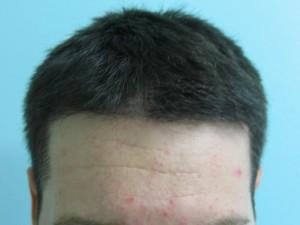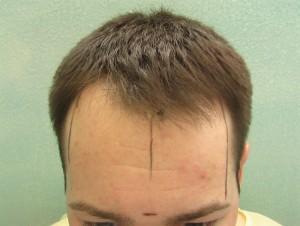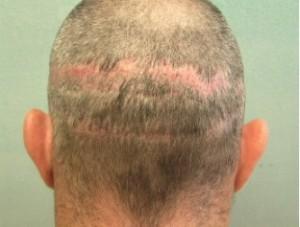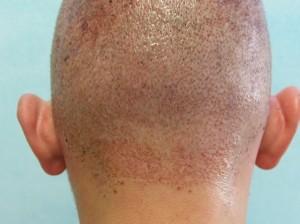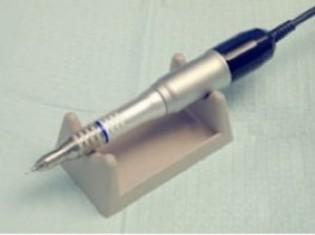Men and women have tried, for hundreds of years, to find a cure for the unstoppable force of androgenic alopecia, commonly known as pattern baldness. Hair has historically been a symbol of youth, virility, beauty, sexuality, and success across many cultures. Today in Los Angeles, where fashion, beauty, and health are a driving force in society, suffering hair loss can weigh heavily on a person’s quality of life. In the past, remedies to stop hair loss relied on herbs and minerals, but in modern-day Los Angeles, hair transplant is the way to go.
There exist various surgical treatments for hair loss, but the most common, safe, and effective is hair transplantation. This procedure involves the removal of healthy hair from a place (typically the rear scalp) where hair is still plentiful. These viable hairs are then implanted into the balding recipient area (typically the top of the scalp, from hairline to crown) and voilà!—a healthy new head of hair.
Unfortunately, it is not always quite this simple, as there are many different versions of hair transplant. Within the 468 square miles of this sun-filled city, a prospective hair restoration patient will find multiple clinics and many different doctors, all touting that their prescribed method is the best. But before we continue on to discuss the present and future of surgical hair restoration, first, let’s revisit the past.
HOW HAIR TRANSPLANT CAME TO BE
Hair restoration has majorly evolved over the past hundred years. The notion first came about in Japan in the early 1900s and has since developed into multiple types of hair loss treatment, to include:
- -Scalp reduction
- -Temporo-occipital flap surgery
- -Punch grafting
- -Micro/mini-grafting
- -Hair transplantation
Most items on this list are now considered antiquated methods that would not be used for hair restoration. Scalp reduction and flap surgery are invasive, dangerous surgeries that run a high risk of permanent nerve damage and severe scarring. Punch grafting and its descendents, micro/mini-grafting, are also known to leave atrocious scars in their wake.
Hair transplant has come to be the premier hair loss solution that it is through the trial and error of history. Surgeons and clinics have, for the most part, narrowed it down to two major types of hair restoration:
- -Follicular unit transplant (FUT) ( strip surgery)
- -Follicular unit extraction (FUE)
HAIR TRANSPLANT IN LOS ANGELES TODAY
This brings us back to where we left off earlier—the present. Strip harvesting and follicular unit extraction are the most widely used surgical hair restoration techniques. Though any expert in hair transplant would consider FUE the superior technology, both types of surgery remain in global use. Here is a breakdown of these two methods:
FUT/Strip Harvesting:
This older method of hair transplant requires removing a strip of skin excises a strip of flesh from back part of the head. Once the wound is sutured closed with stitches or staples, the flesh is then dissected into follicular units (groups of on to four hairs) to be implanted into the bald areas of the scalp. While strip harvesting tends to be the cheaper method of the two (which corresponds directly with the surgeon’s skill and hours invested in a procedure), it has many inherent flaws that even a world-class FUT surgeon could not avoid.
The purpose of hair transplant, and other cosmetic surgeries, is to improve aesthetic appearance, not add to our insecurities. One major flaw of FUT is the infamous linear scar it leaves behind. This smiley-face-shaped line may be hidden under the hair, and even minimized with modern sutures like the tricophytic wound closure. But the scar will typically stretch with time, and if hair is ever cut short, the telltale scar will prove an unfriendly burden. Another inherent flaw is that FUT can only harvest hair from the mid-rear of the scalp, where hair naturally grows thickest. These thicker donor follicles undermine the ability to craft a gradual hairline, leaving many patients with a harsh and unnatural-looking wall of hair to frame the face.
Follicular unit extraction/FUE hair transplant:
This newer method of hair transplant excises the hair in individual follicular units. That’s right, one teensy cluster of microscopic hairs at a time. This minimally invasive approach to hair restoration uses no scalpels for excision, but rather a punch device with a circumference of approximately 1.0 mm and an innocuous needle device. There is no mass-cutting, thus no stitching or stapling. While this procedure might be more monetarily expensive because of its tedious and labor-intensive nature, it also requires a more detailed and proficient performance from the surgeon.
Advantages to this hair transplant method start with the purposeful selection of donor hair. Hairs are carefully chosen and can be derived from areas outside the “traditional” mid-rear strip. This makes for ideal hairline restoration, since finer-caliber hairs can be taken from the nape of the neck to create a softer, more aesthetically pleasing look. Another major advantage is that FUE leaves NO LINEAR SCAR. A third benefit is that FUE has the groundbreaking ability to treat severely bald patients, through its capacity to harvest non-head hairs. This is called body hair transplant, and donor follicles can be derived from almost anywhere on the body.
HAIR TRANSPLANT—THE FUTURE
While there is talk of possible hair cloning in the future, science hasn’t broken solid ground yet on that front. As of now, the future of surgical hair restoration lies in follicular unit extraction and the tools used to get the job done. Presentations on automated machinery have been big at recent annual ISHRS conferences—researchers are attempting to blaze the trail, or rather ride the moving walkway, to robotic hair transplantation. So far, we have seen:
Automated implanters influencing Los Angeles hair transplant include the Choi implanter and NeoGraft. These devices computerize the implantation portion of surgery but, in my opinion, are still flawed because:
- -NeoGraft uses air-vacuuming technology, which may dry out the grafts and compromise their survival.
- -The apparatus is physically too large to allow for tight packing of the follicles in the recipient area. Thus, if a patient requires more density, these automated implanters would not suffice.
- -Human control—the eye, artistry, and vision a surgeon possesses for placing the grafts appropriately—takes depth, angle and direction into account. These machines do not do this. And furthermore, they produce higher incidence of buried grafts, which results in cysts and pitting complications.
We have also seen automatic extractors beginning to influence hair transplant, to include NeoGraft and Artas. It is my opinion that these devices cannot match the finesse and proficiency of a physician-controlled process. They remain inferior because:
- -NeoGraft, again, uses vacuum-based technology for excision, which may traumatize the graft.
- -Artas uses a 1.65mm punch, which creates larger wounds, thus more apparent scarring. This can also create a “halo” effect by damaging the viable grafts surrounding the punch.
Click here to read more about hair loss.

